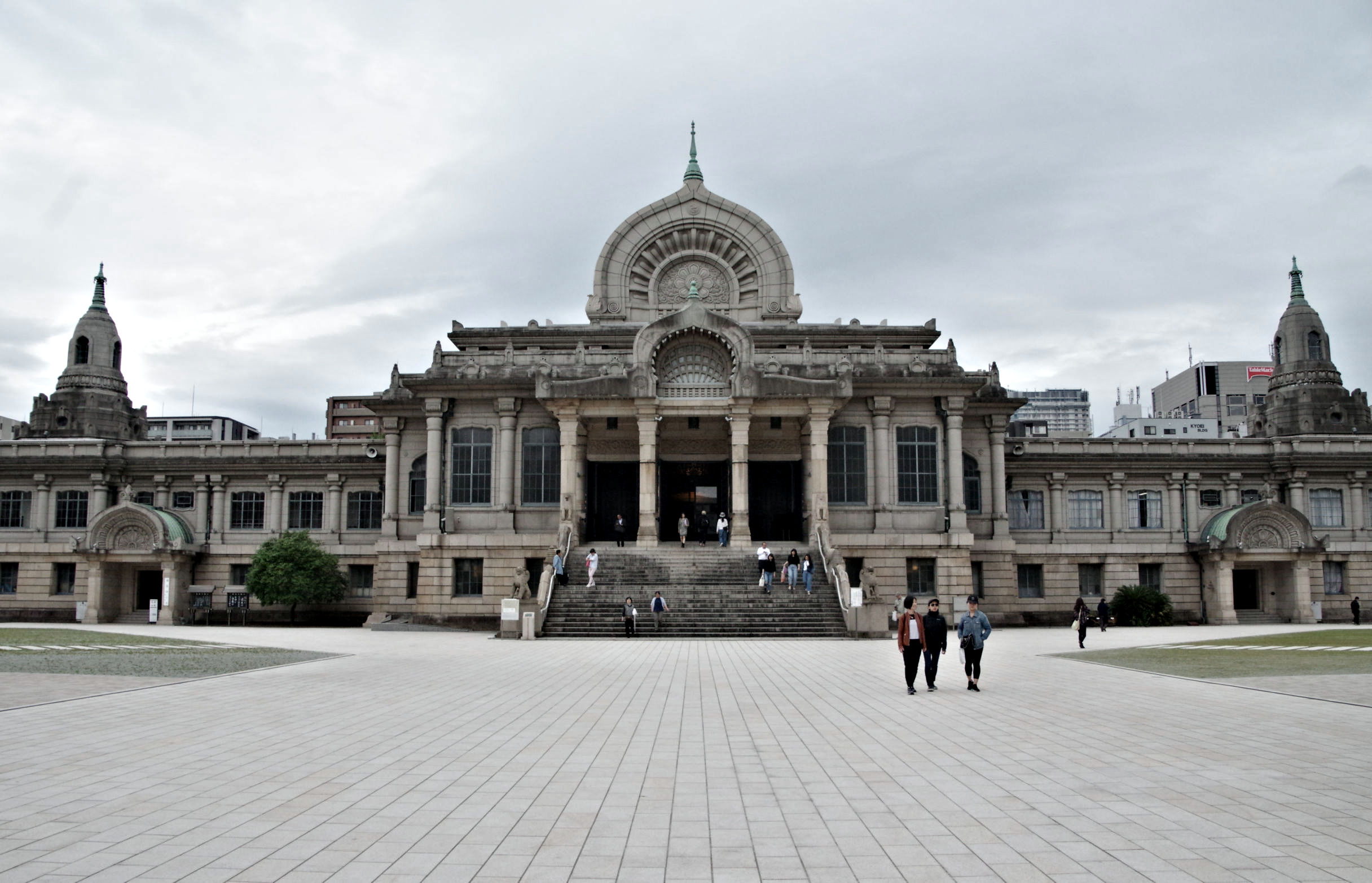
Whilst in Java the propagation of Islam had terminated
the construction of candi (Hindu and Buddhist temples), in Japan Buddhism and
Shintoism has been accepted until today. Thus, temples and shrines have been
maintained or newly constructed and lion statues of modern design, installed.

Pairs of lion which guard the temple at the top and the bottom of the handrails
of the central stairs were certainly the works of the same architect. Although
the lions look more or less similar to that of Chinese lions at the Great South
Gate of Todaiji Temple in Nara, the bottom pairs resemble the Winged-Lion which
was imaged in Persian Mythology and also adopted as the symbol of St. Mark. Also
they had long curled tails. This style must have been created with to the
imagination of Prof. Ito who was familiar with the culture of ancient Europe and
West Asia.
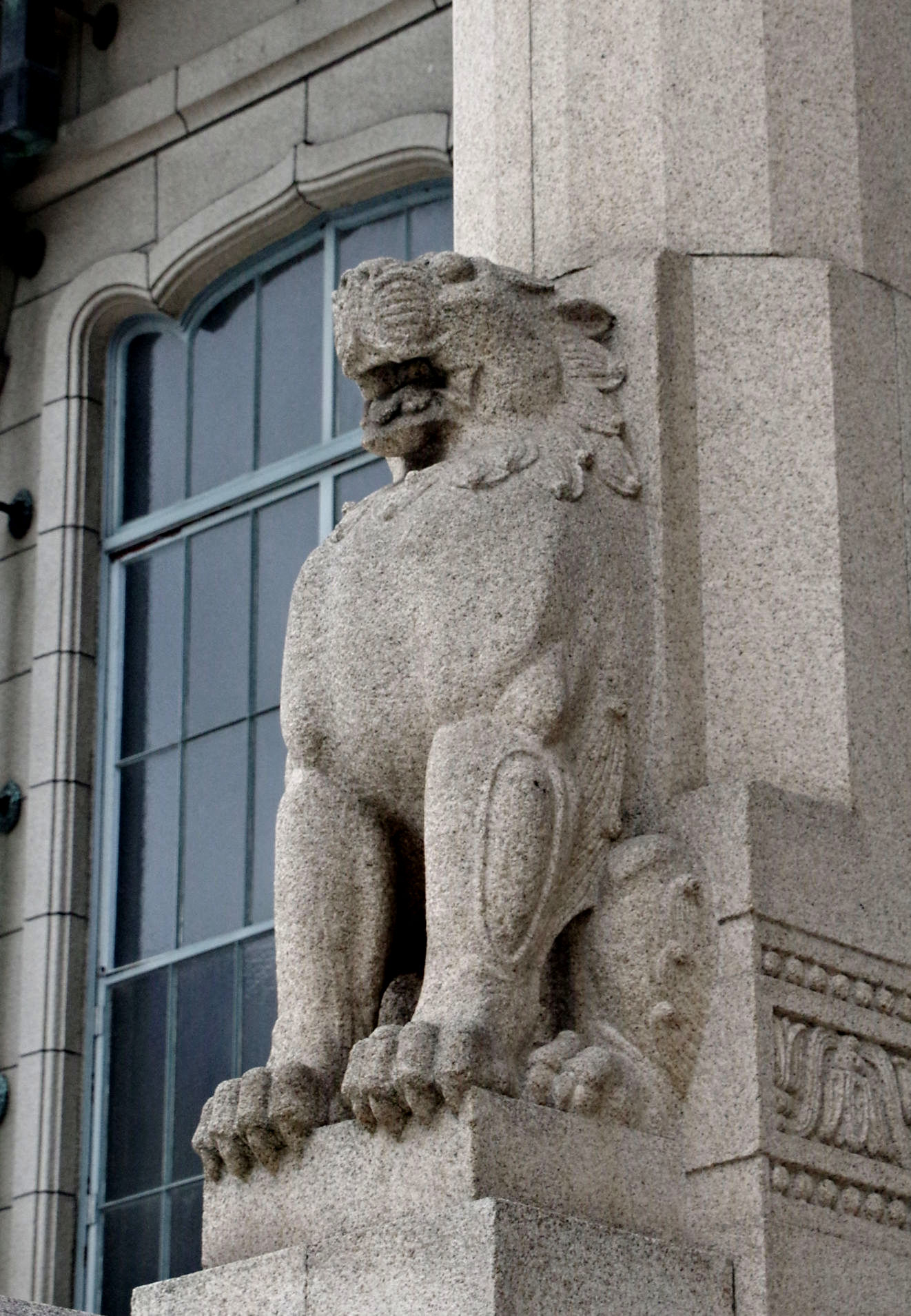
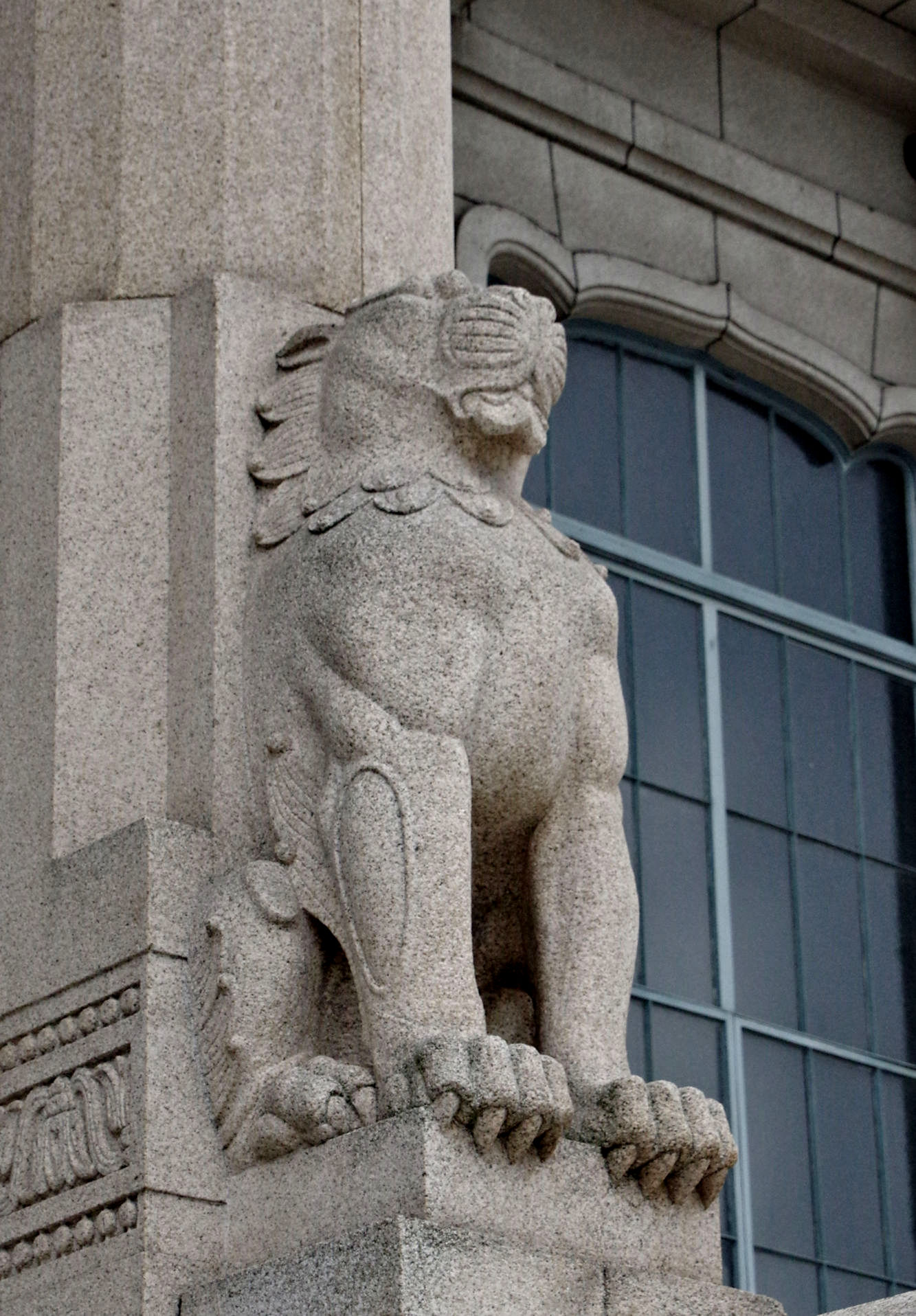
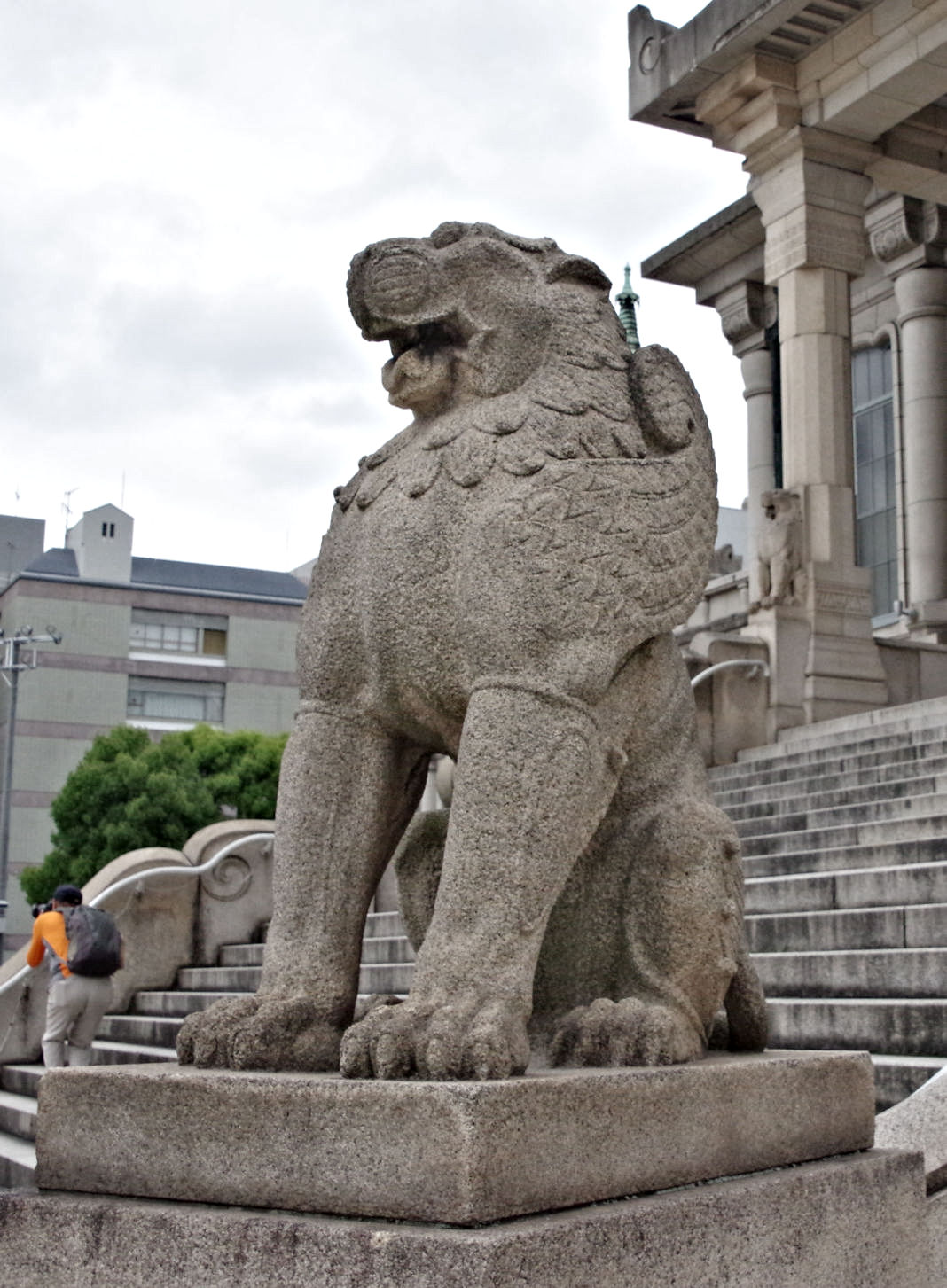
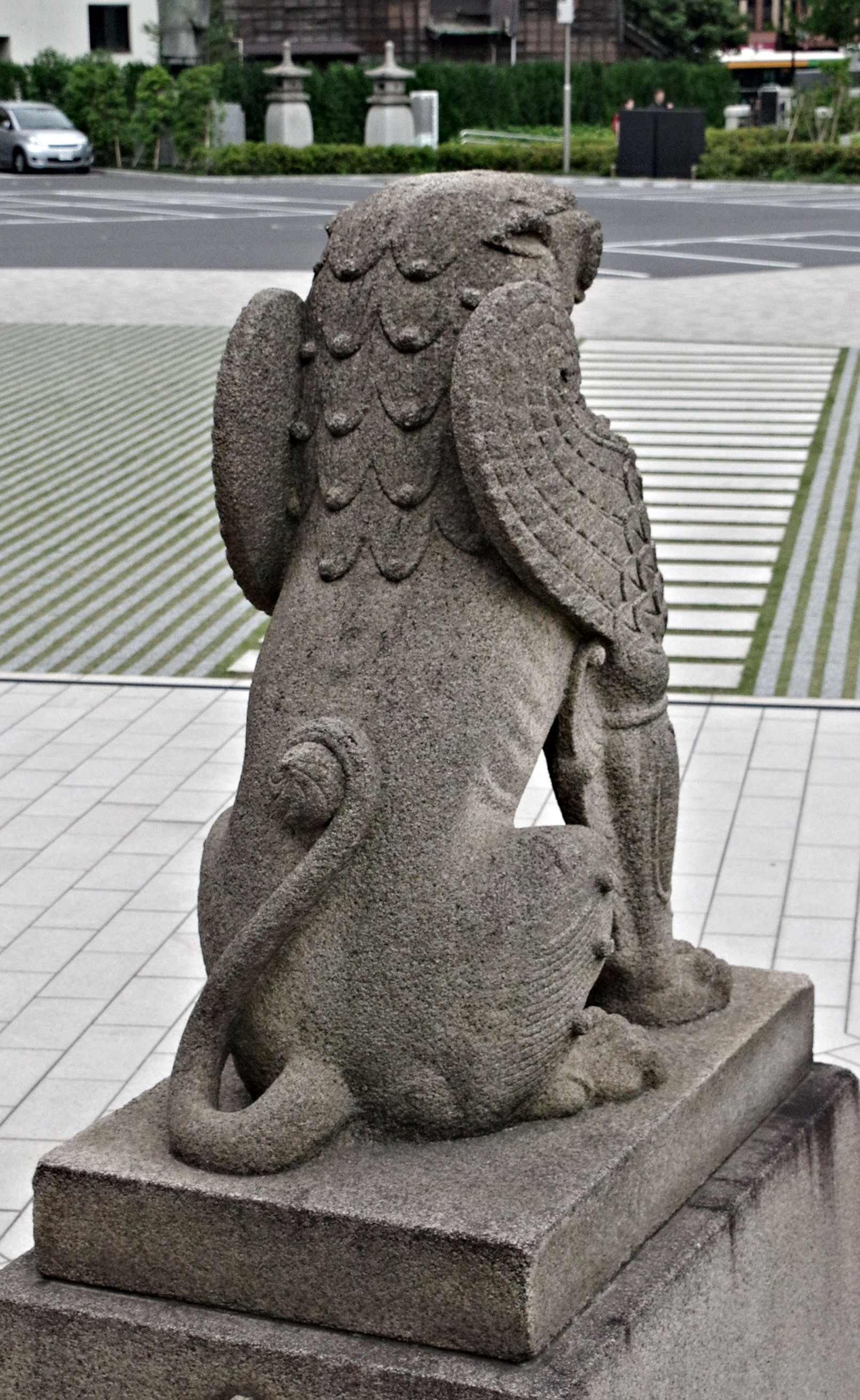
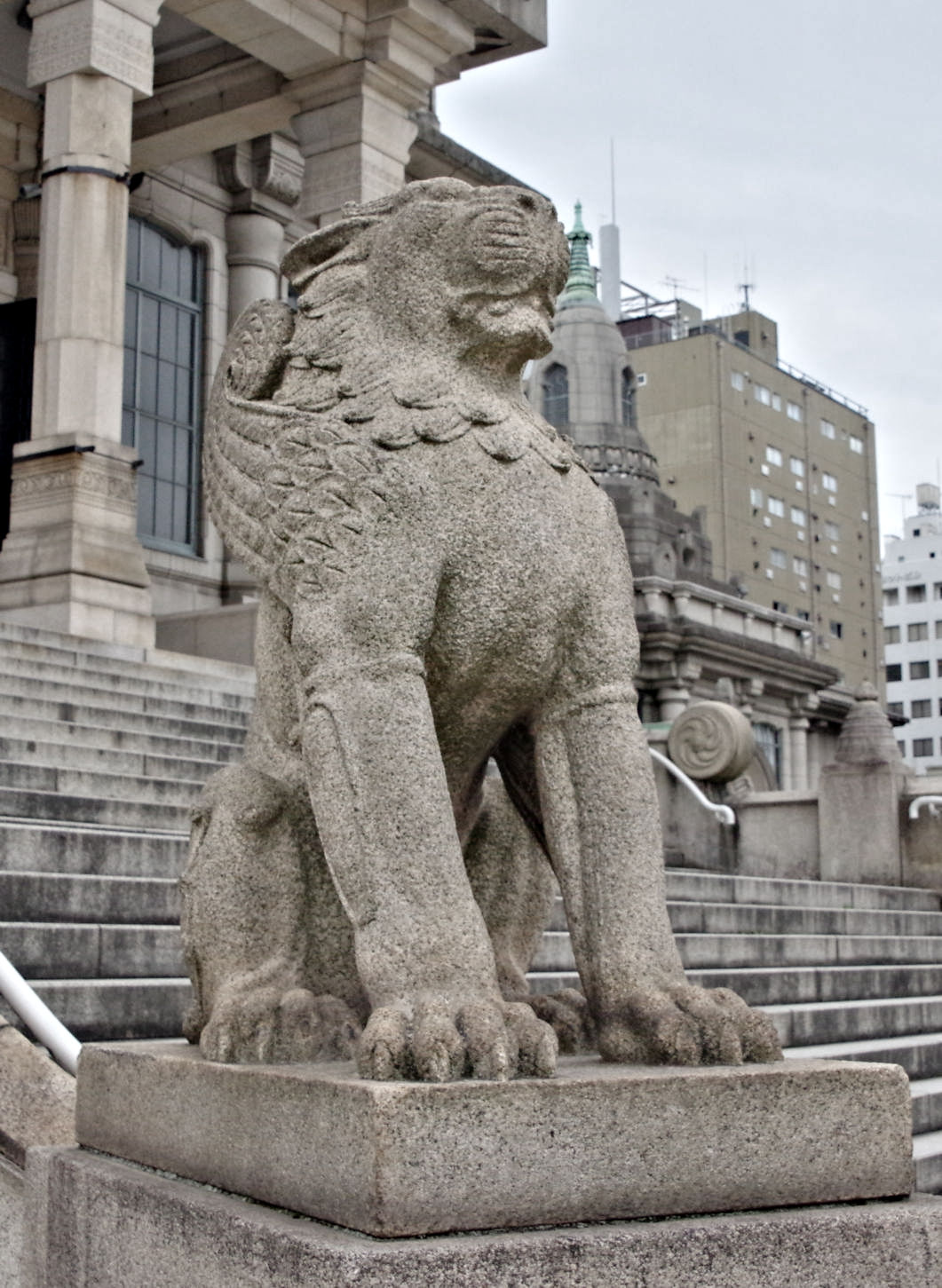
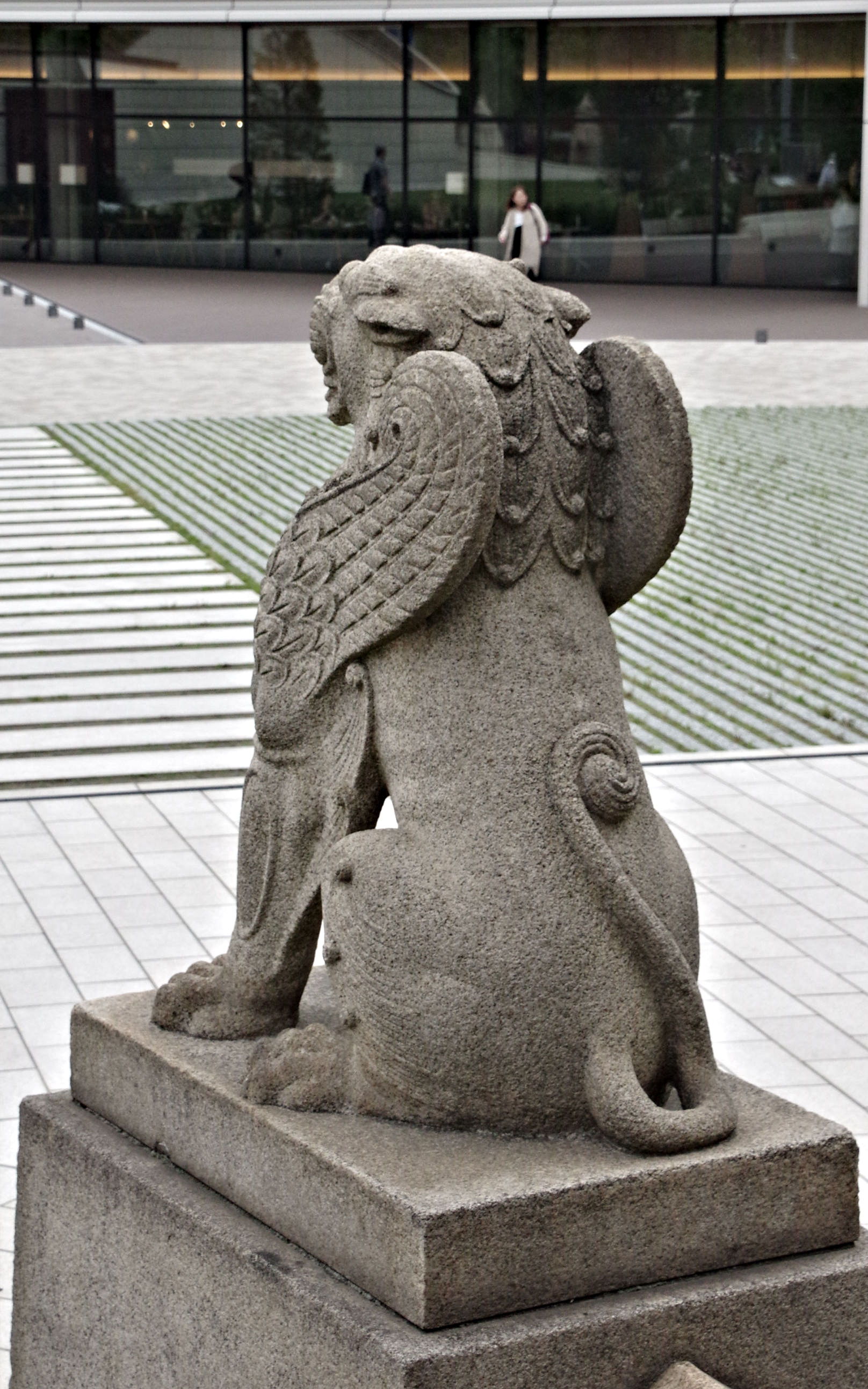
Lion statues at the bottom of the handrails of the central stairs of Tsukiji
Hongwanji Temple, Tokyo. Photographed by M. Iguchi, 7 May 2018.
Lion guardian statues designed by Prof. Ito are also found at the Car Park
Entrance Gate of Yasukuni Shrine, Kudan-shita, Tokyo. On the plate was inscribed
that the statues were dedicated in the 8th year of Showa (1933) by the Katakura
Family which rooted from Okaya, Shinano (the present-day Nagano prefecture) and
built a fortune by silk manufacture. The figures were Chinese style lions to
which long curled tails were added, the mouth of one being open and the same of
the other being closed in accordance with the Japanese tradition. The design of the
mane and shoulder looked distinctive.
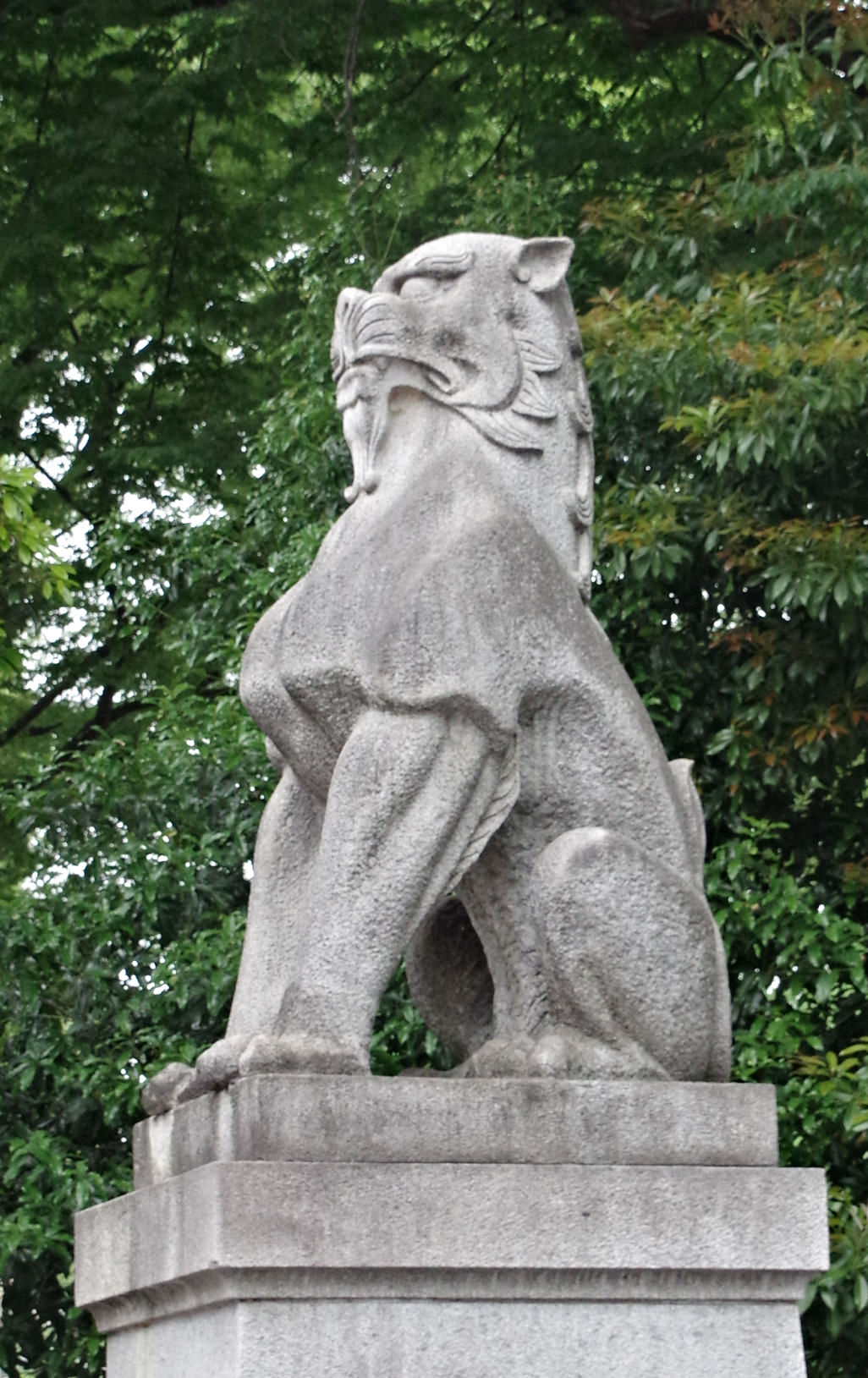
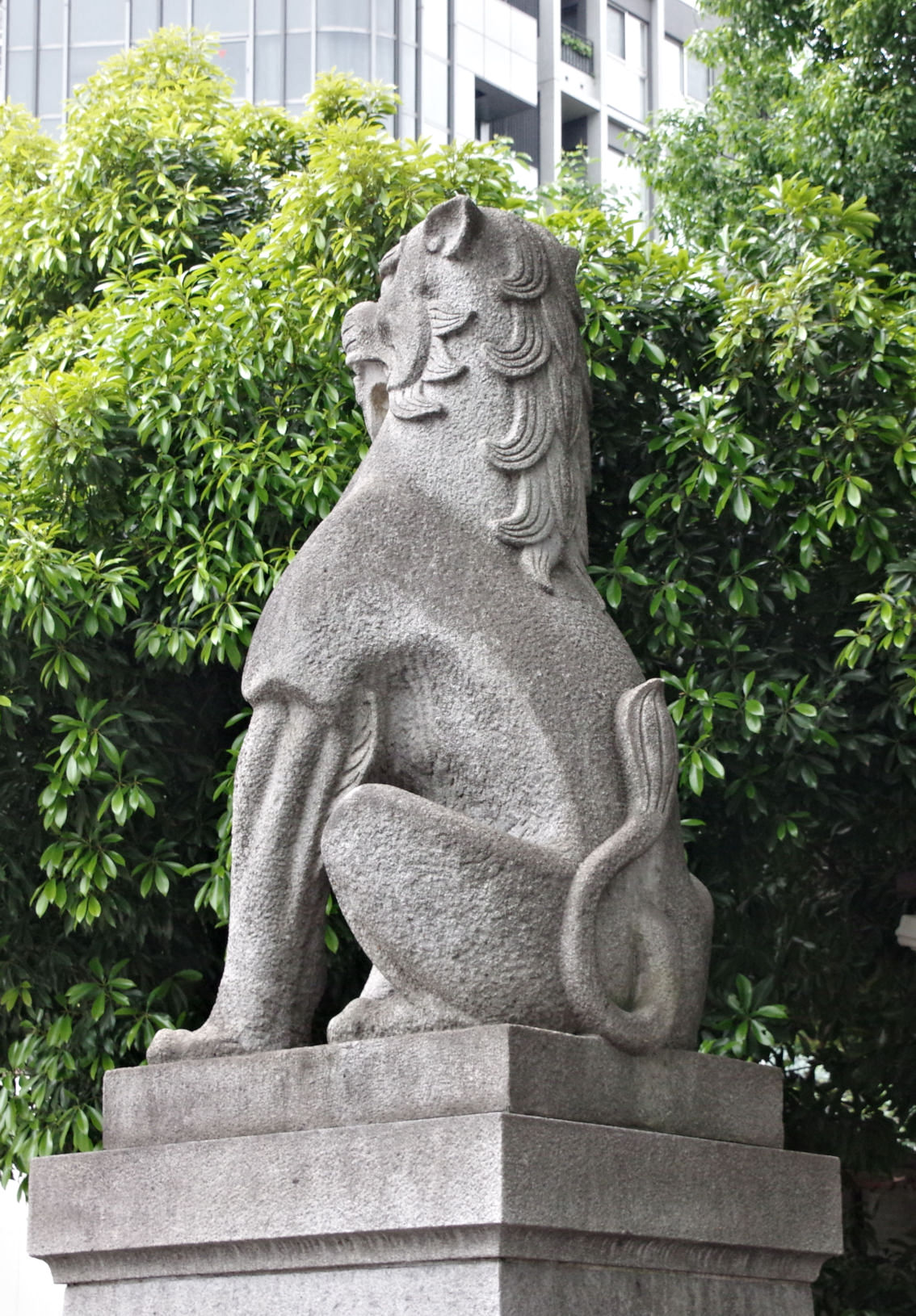
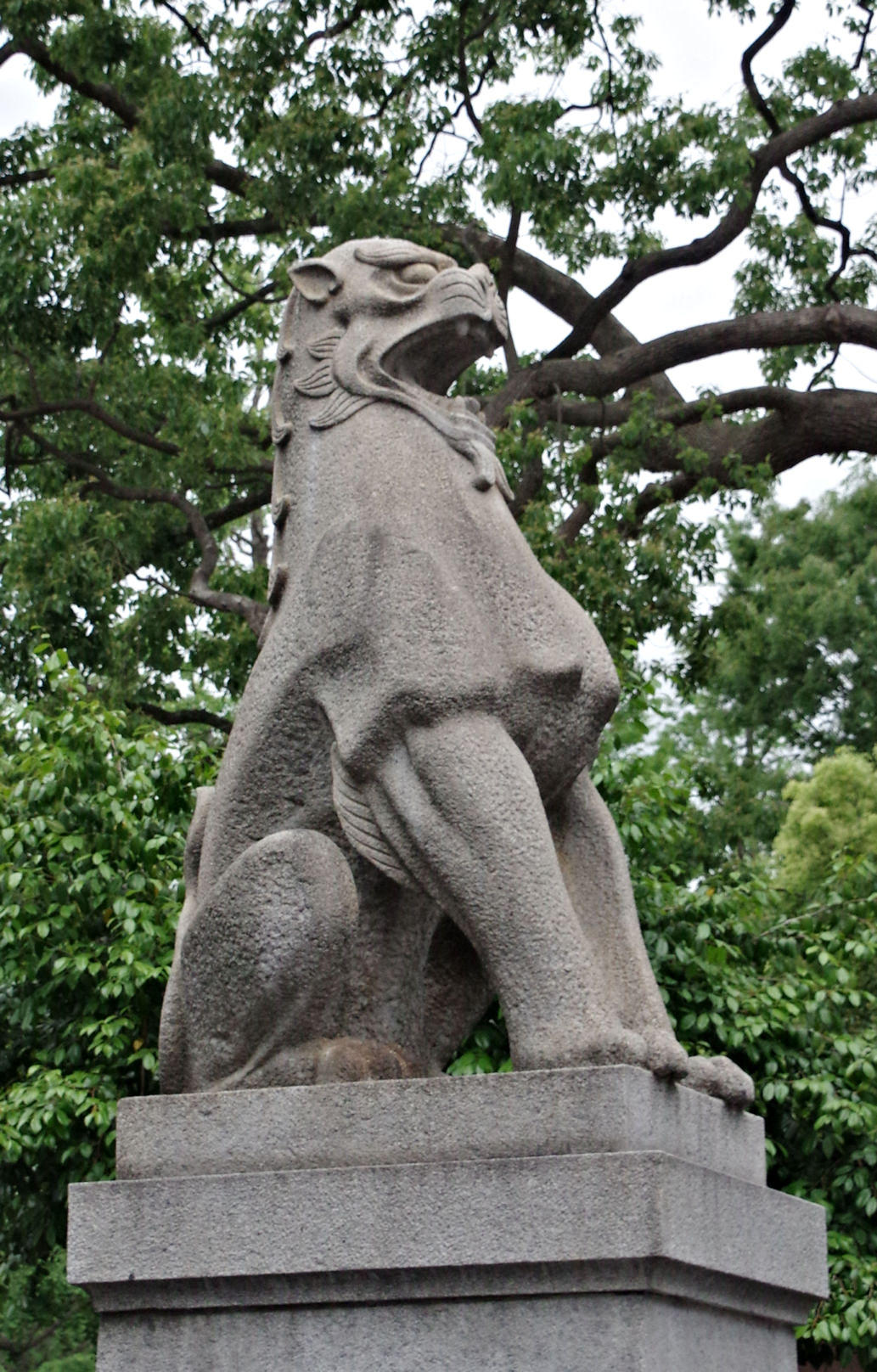

Lion statues at the Car Park Entrance Gate of Yasukuni Shrine, Kudan-shita,
Tokyo. Photographed by M. Iguchi, 7 May 2018.
In front of the South Gate were a pair of brass-made lion statues which,
according to the shrine’s newsletter[2],
were worked by Kaichiro Uchiyama and dedicated in February in 1963 by Iseki and
Co. Ltd., presumably designed after the lion statues at Daihouji Shrine in Shiga
Prefecture.


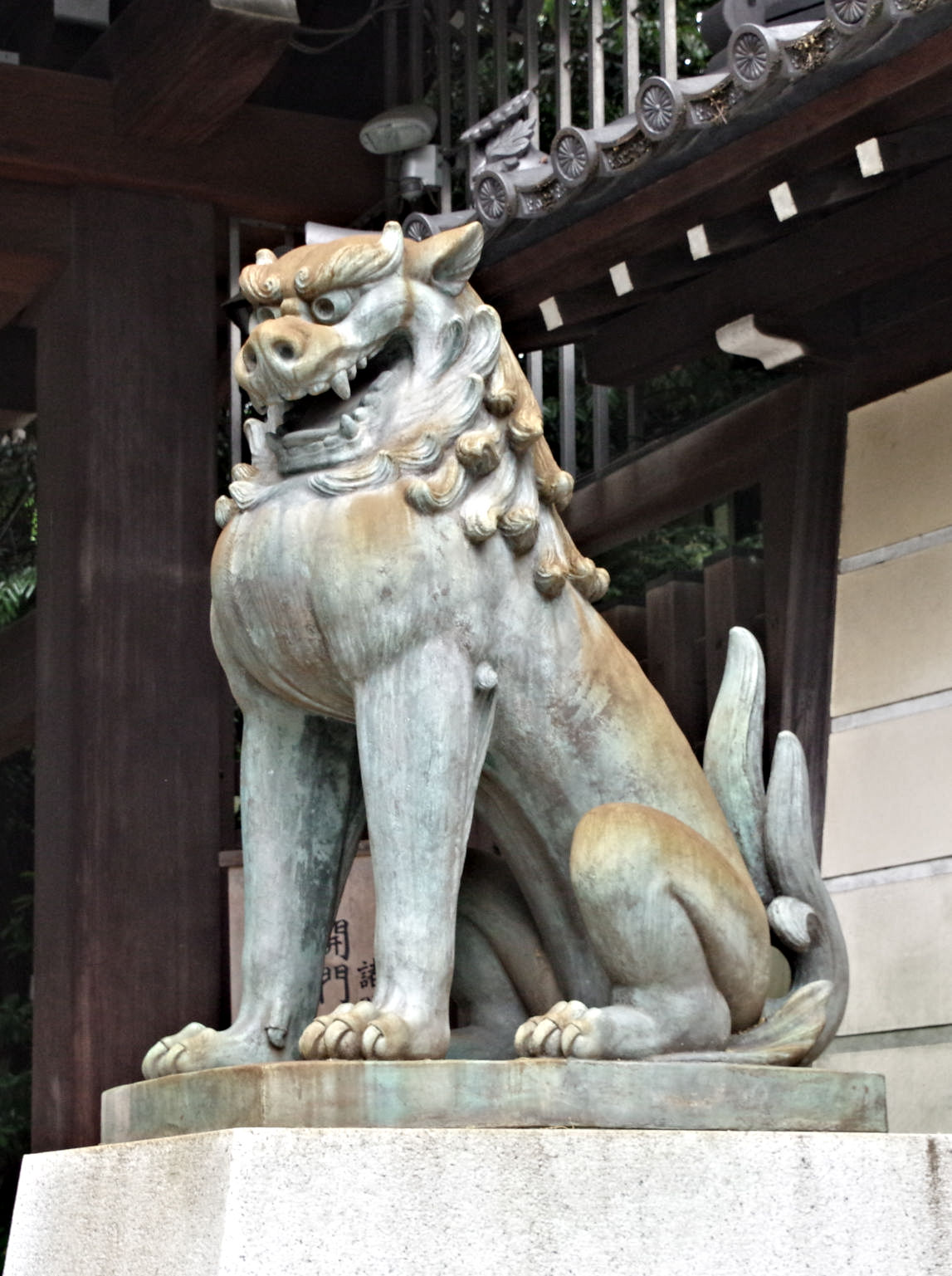
Brass-made lion statues at the South Gate of
Yasukuni Shrine, Kudan-shita, Tokyo. Photographed by M. Iguchi, 7 May 2018.
At Yasukuni Shrine two pair of Shishi-komaninu guardian statues stand on the sides of front approach and in front of the Great Gate. According to “The 100 Year History of Yasukuni Shrine”[3], “the former was dedicated in 1964 by Mr. Ichiro Kiyose, the then chairman of the House of Common, who asked a sculptor, Mr. Kyoji Yagi, to complete the pieces which had been ordered during the Second World War by the Ministry of Army from a sculptor, Naoshi Goto, but left unfinished. The latter, the oldest lion guardian statues at this shrine, were the pieces which had originally existed at Sanxue Temple, Haicheng, Liaoning-sheng, China, where a field hospital was placed during the Sino-Japanese War: They were handed over and dedicated to the Emperor of Meiji.”
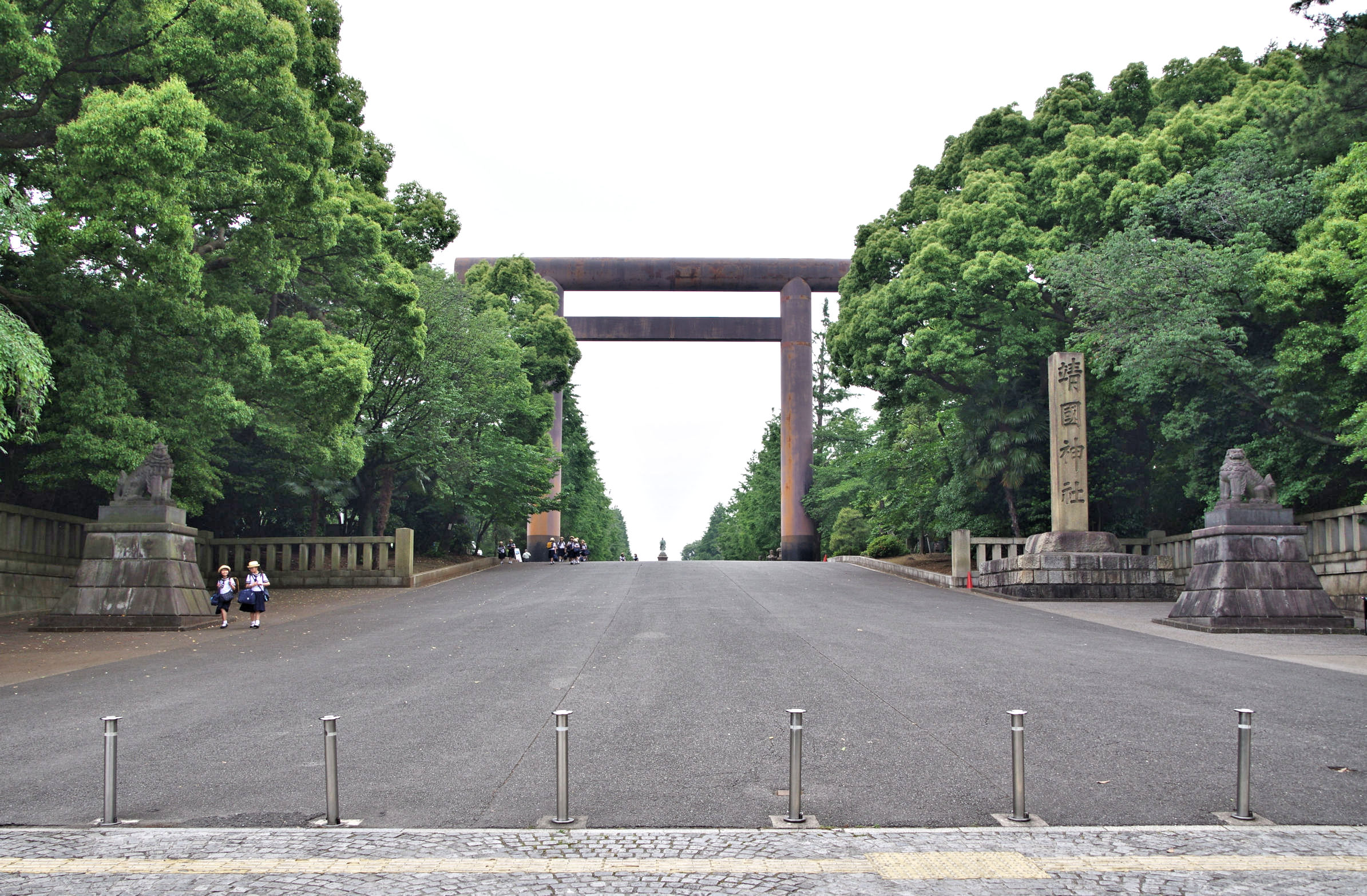
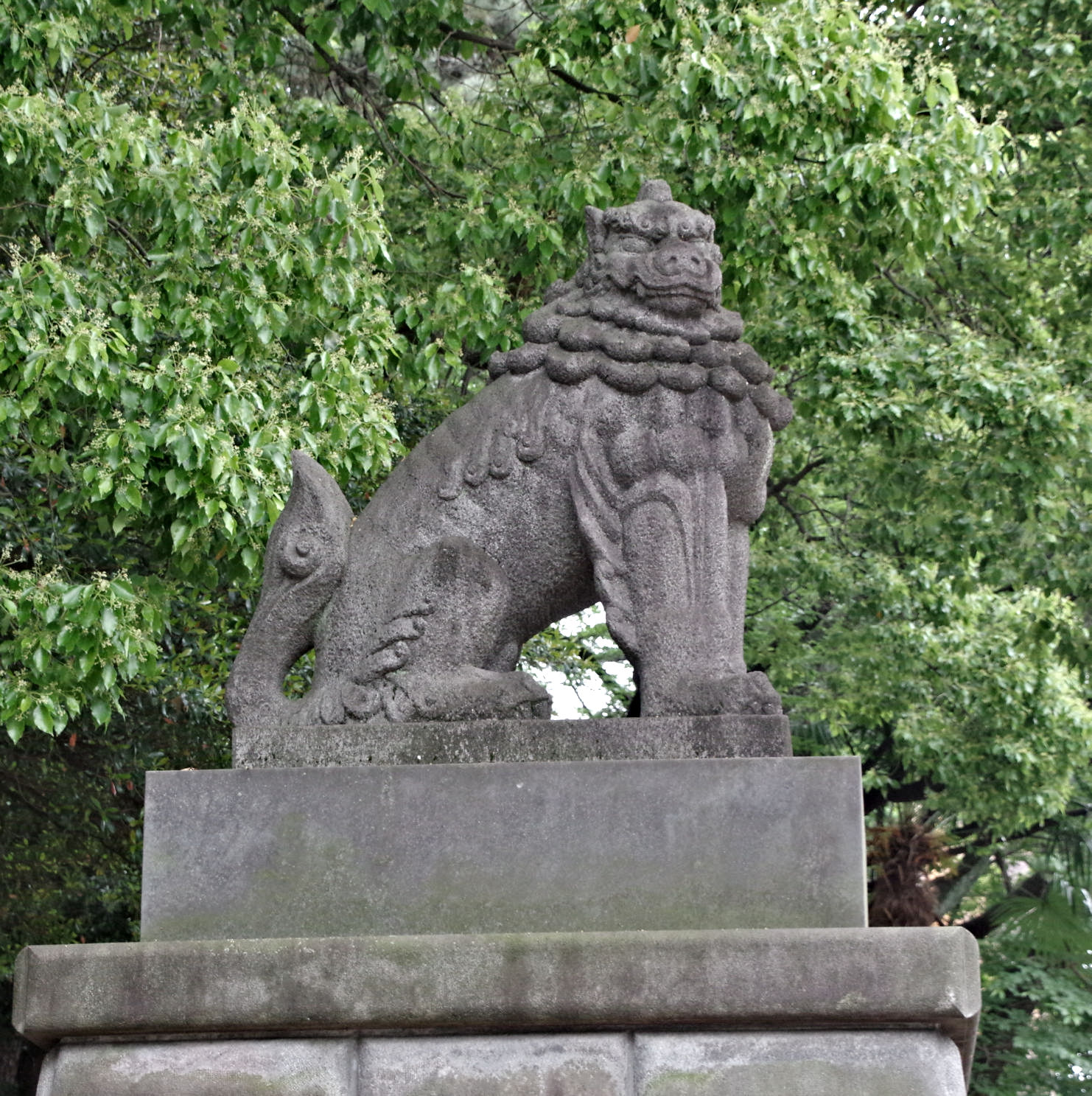
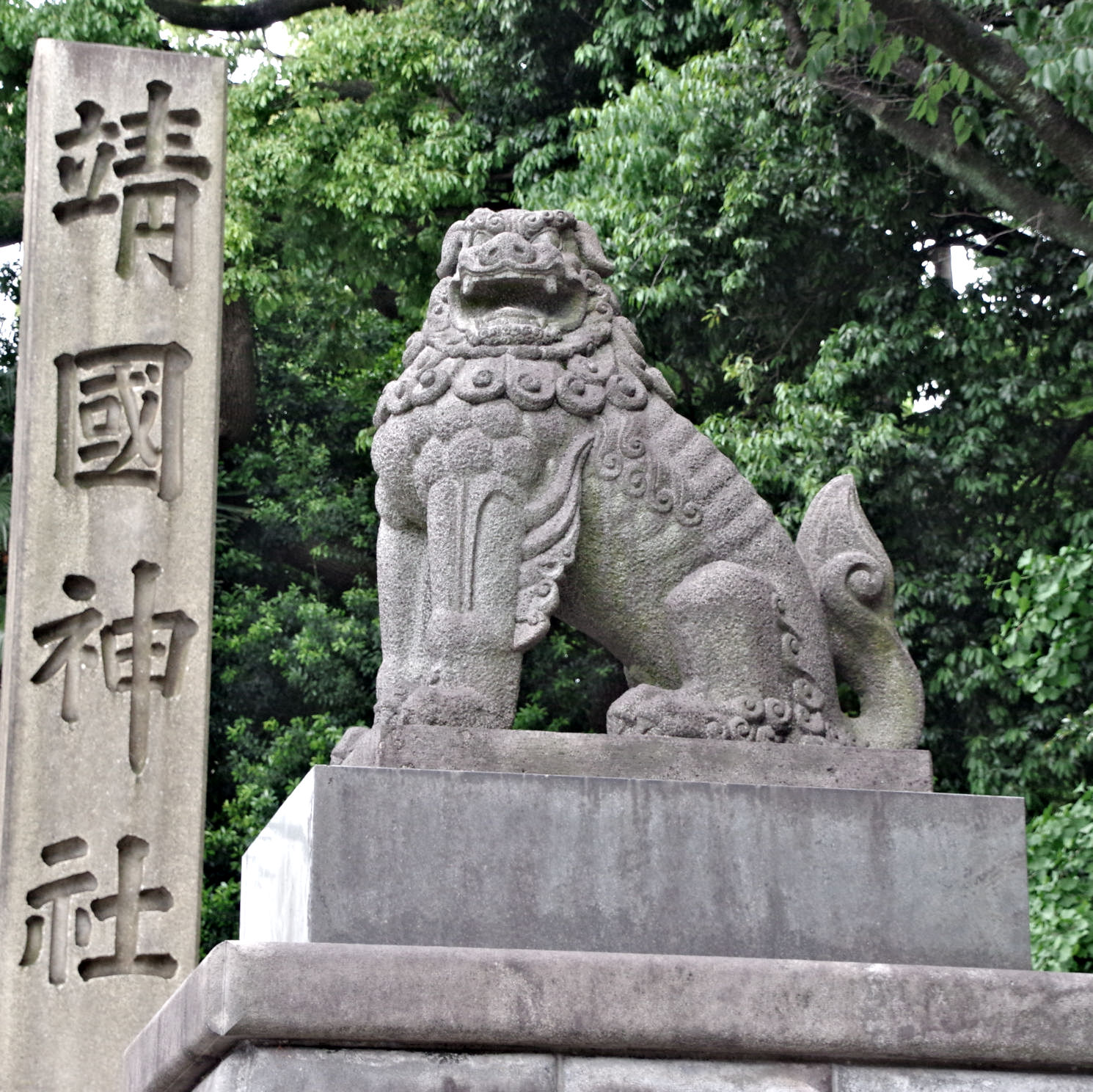

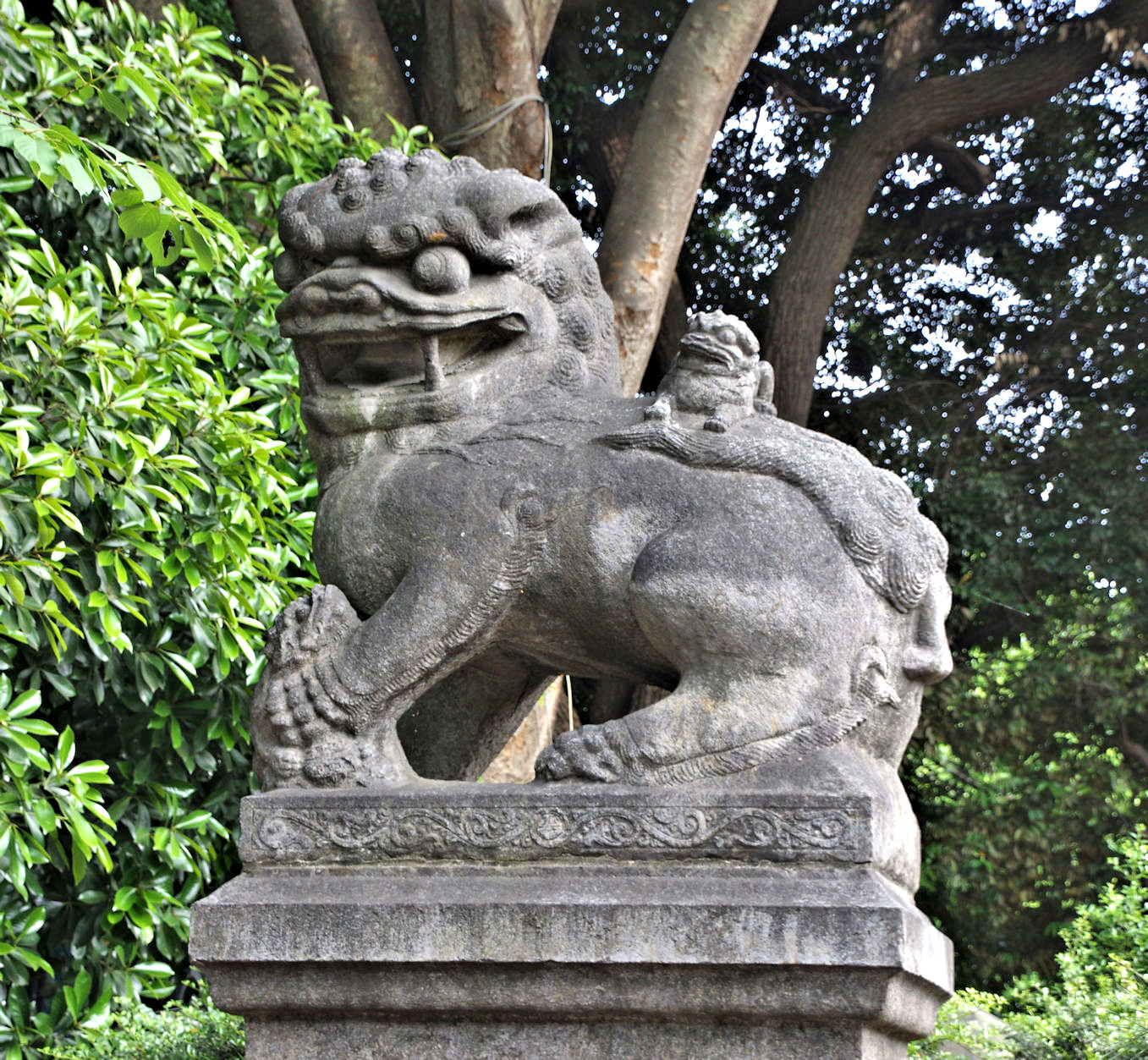
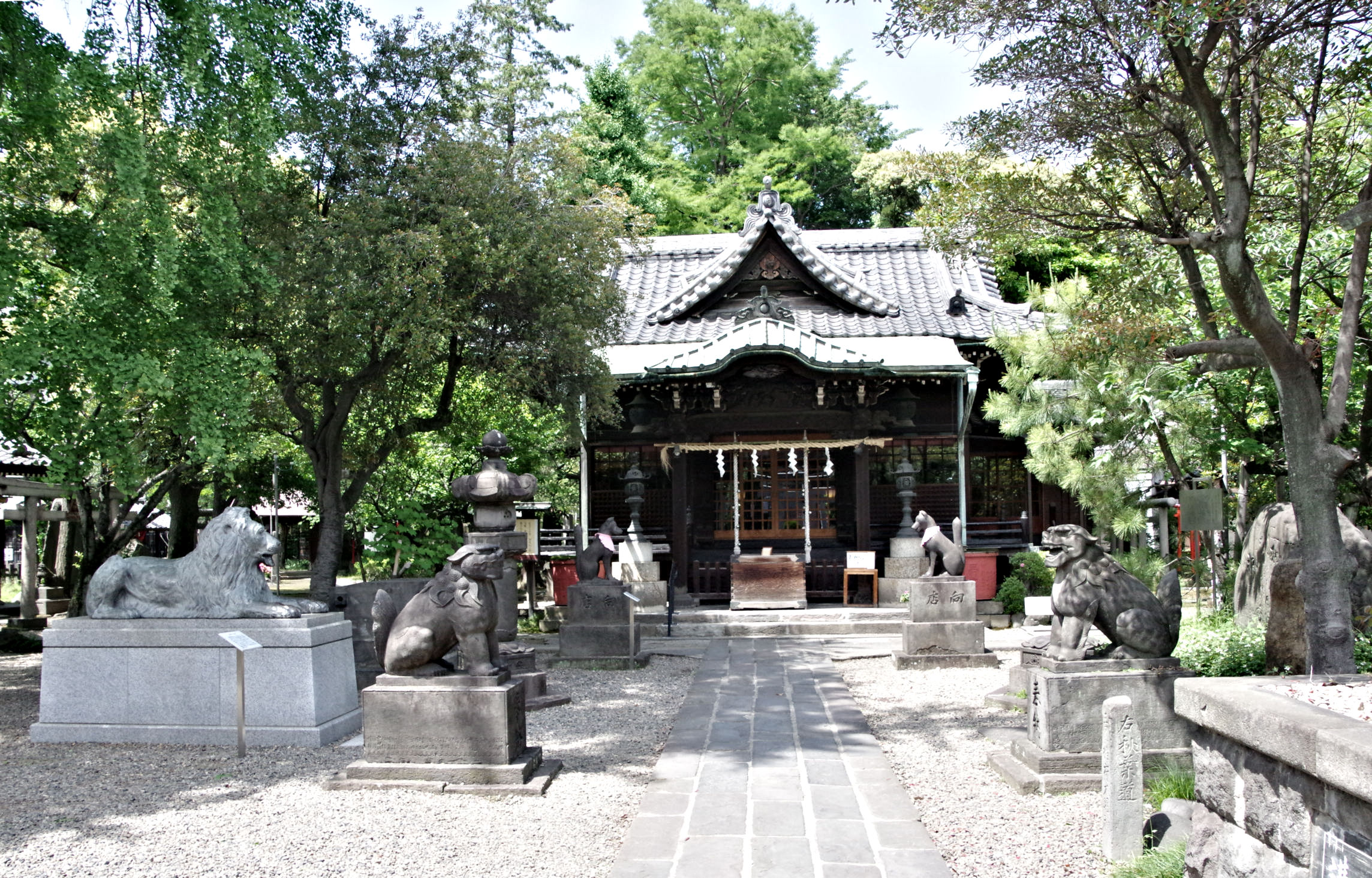
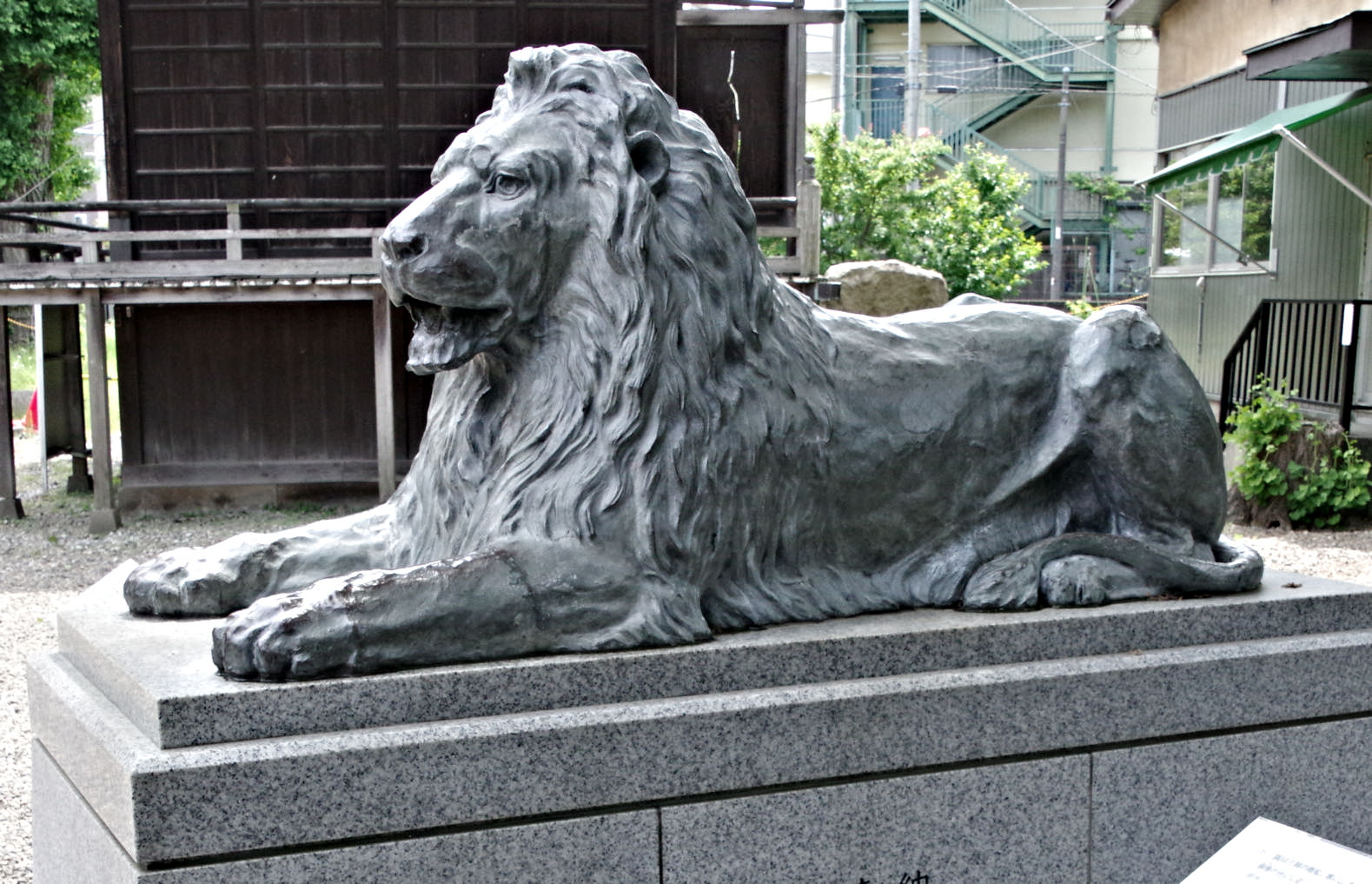
The approach of Mimeguri Shrine (left) and the sculpture of lion moved from Mitsukoshi Department Store’s former Ikeburkuro Branch (right). Photographed by M. Iguchi, 11 May 2018.
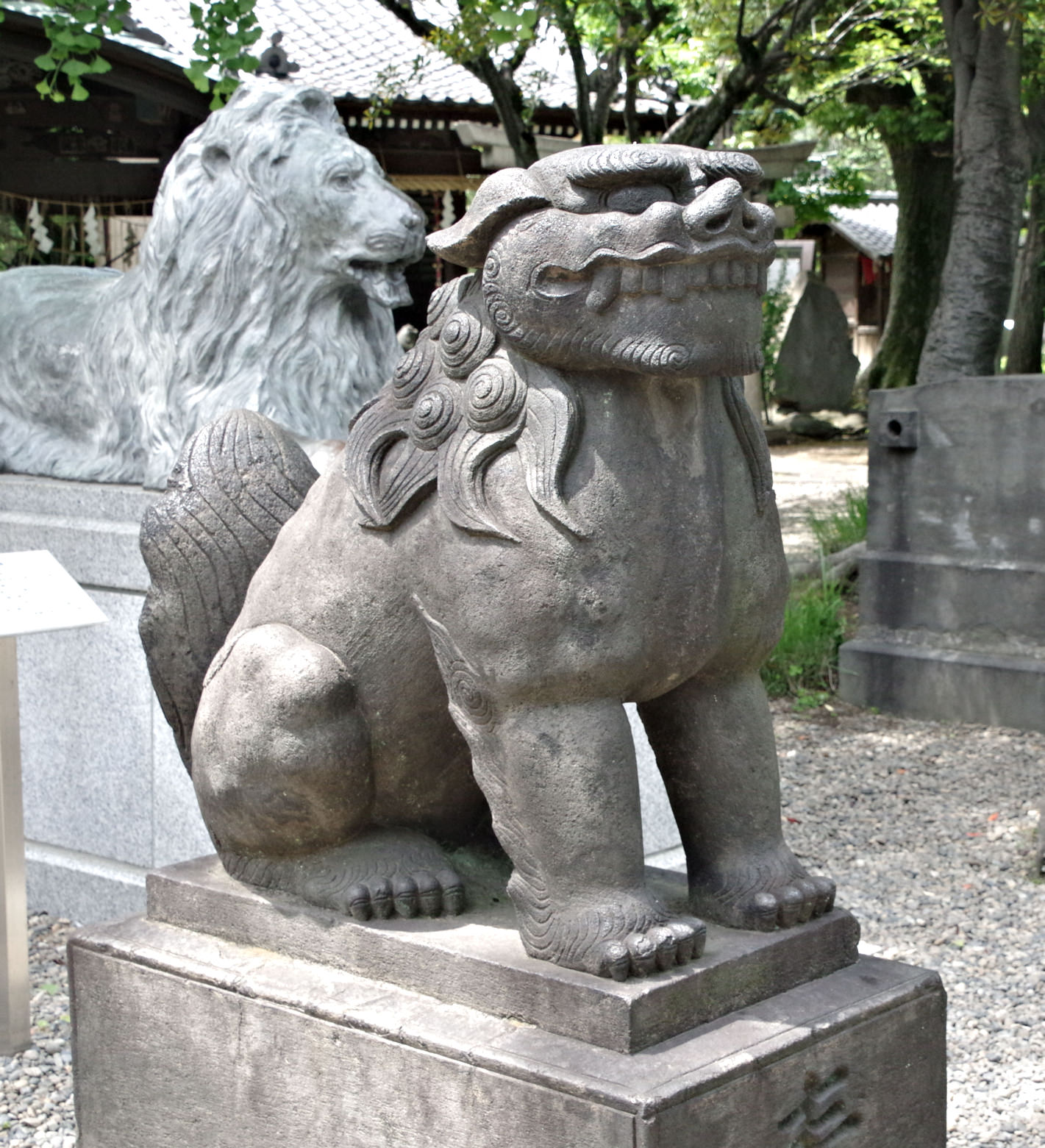
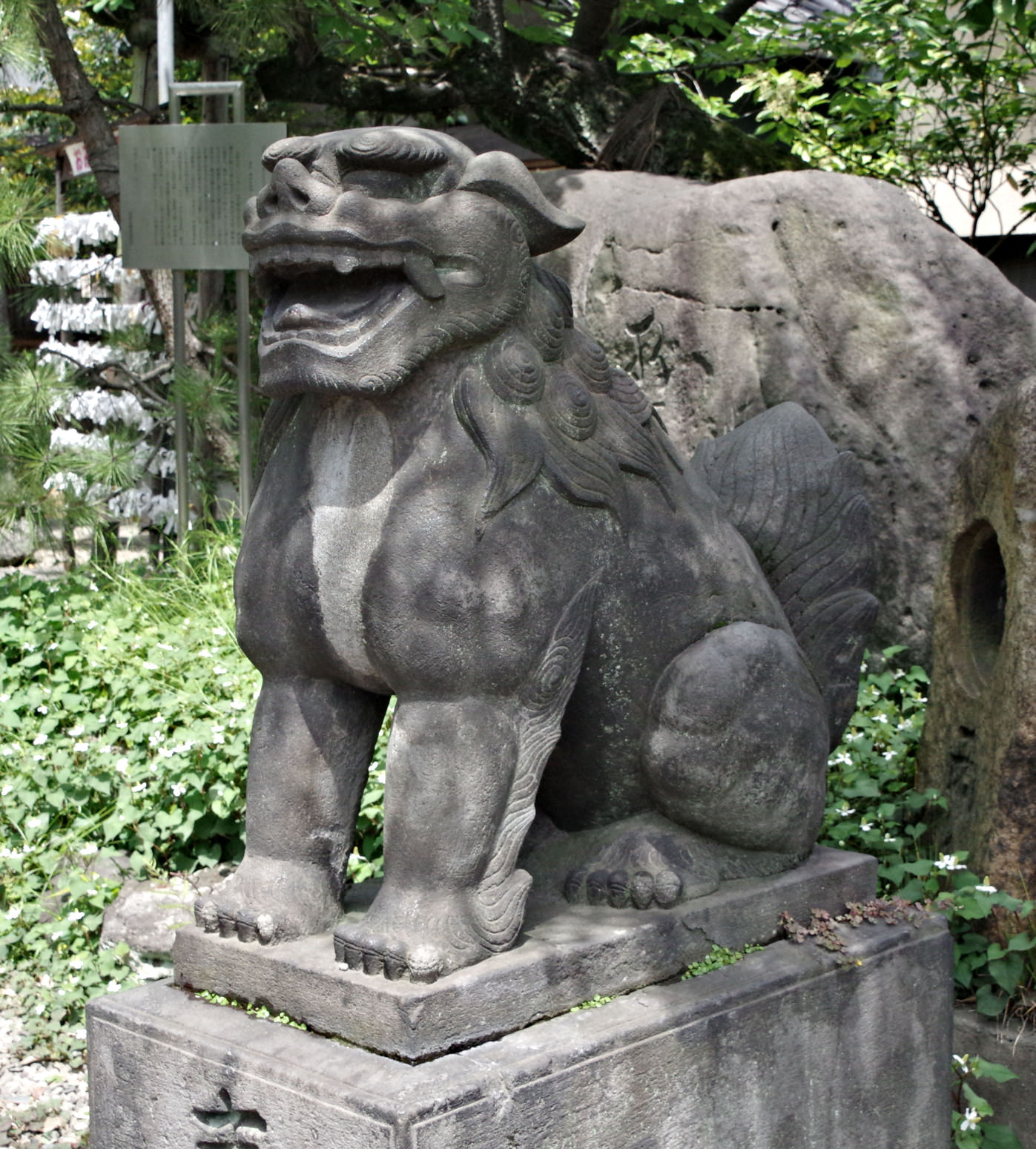
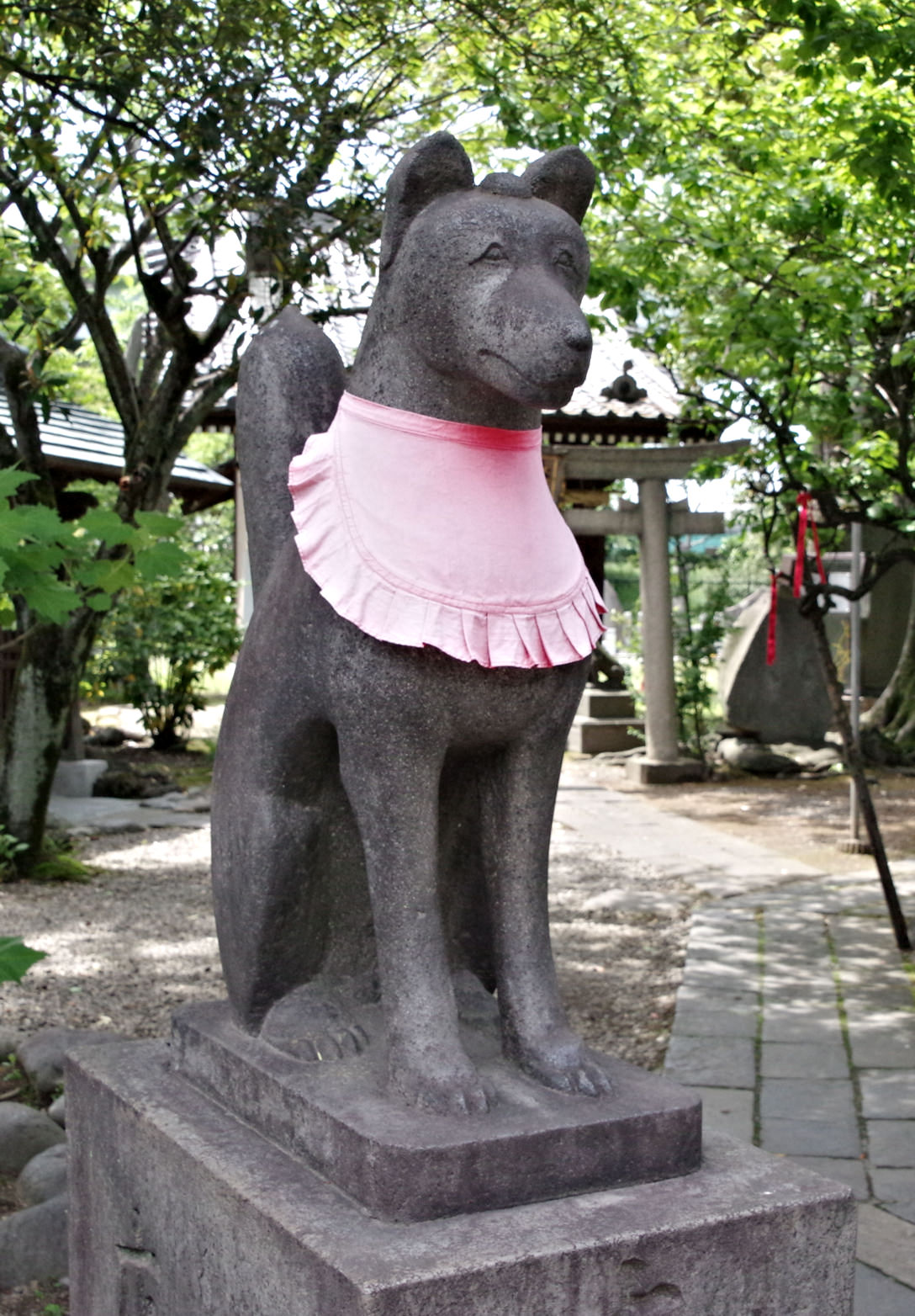

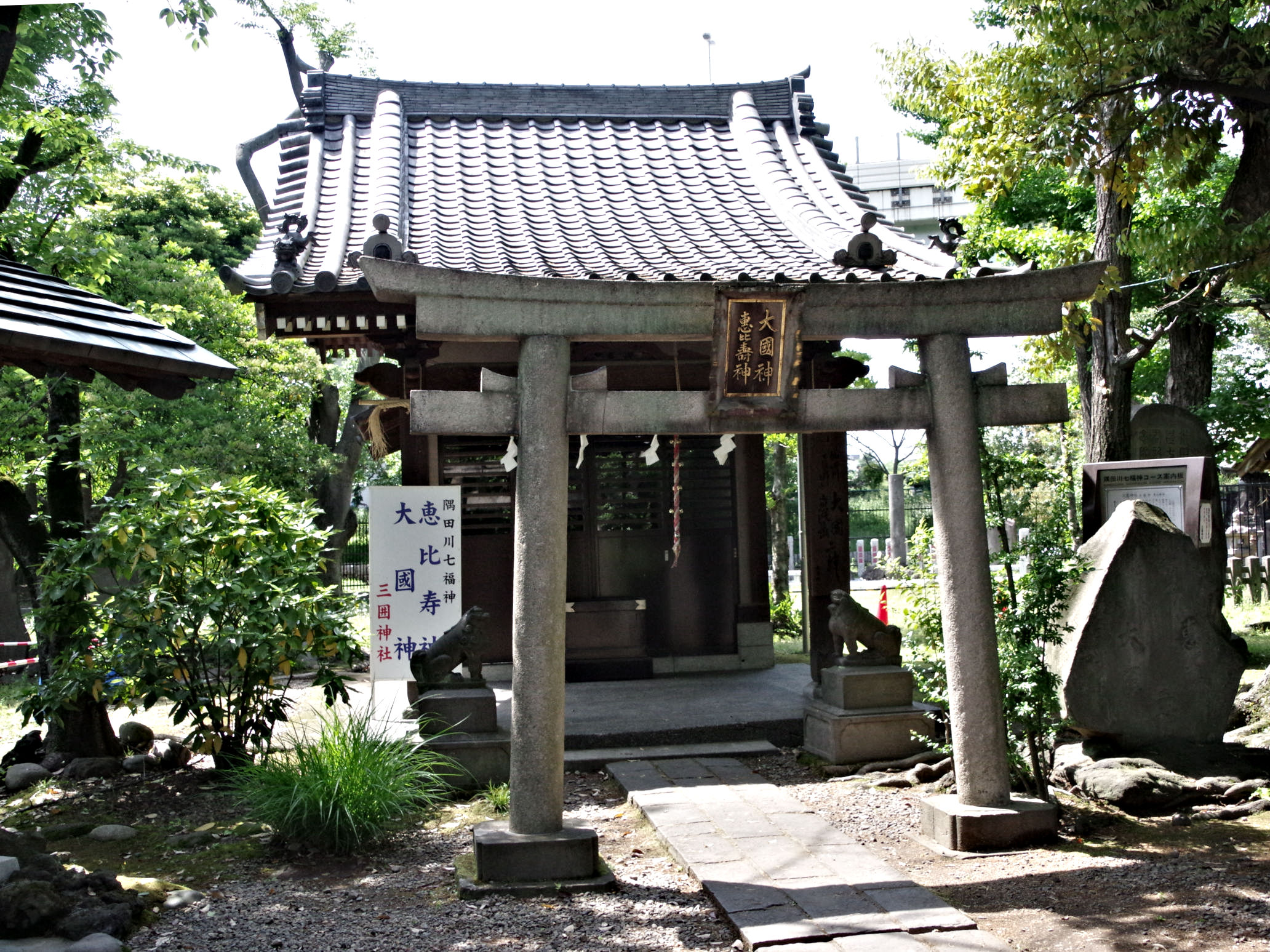
Front view of Ebisu-Daikoku Shrine located in the precinct of Mimeguri Shrine
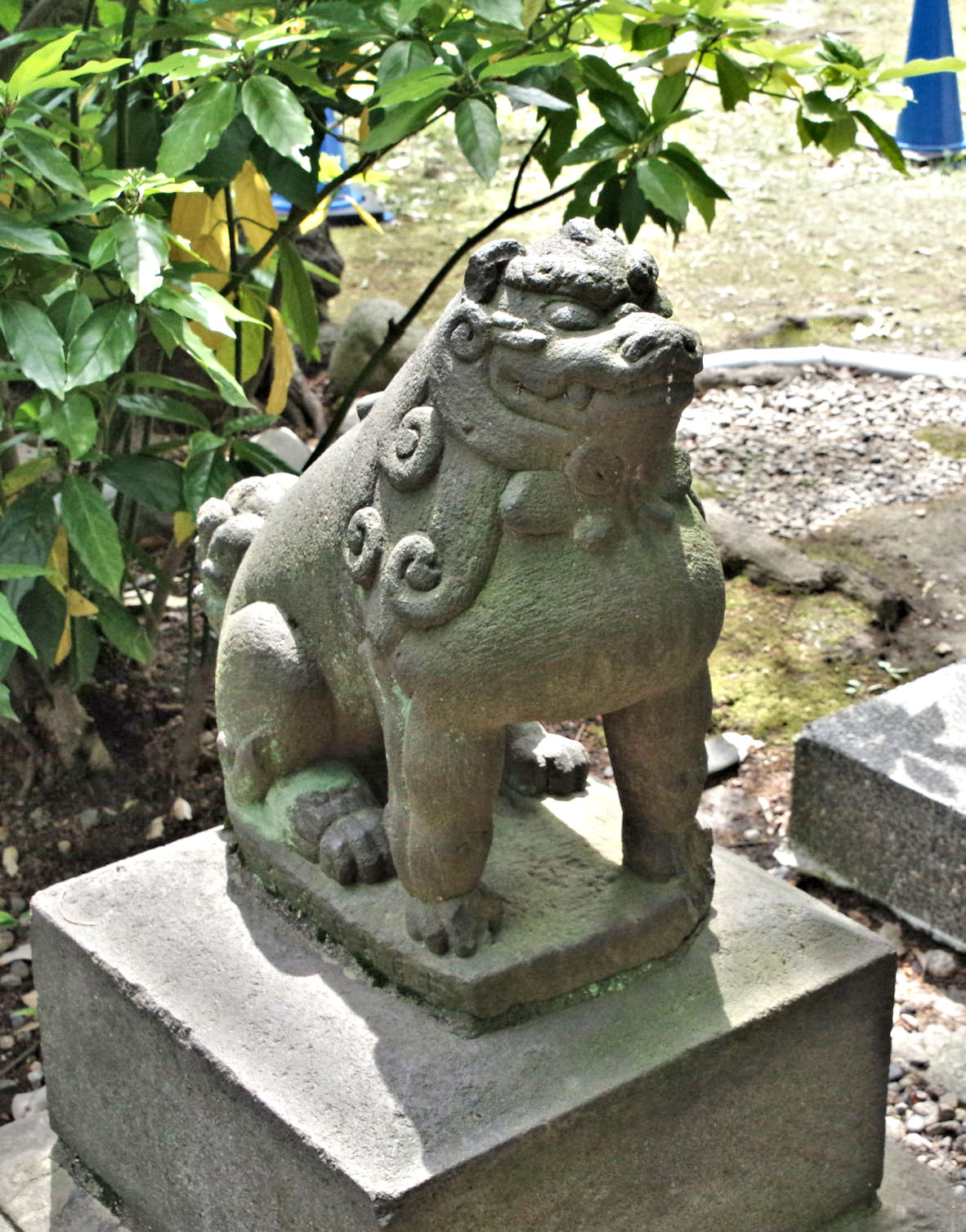

Shishi-komainu
guardian statues at the Ebisu-daikoku Shrine. Photographed by M. Iguchi, 11 May
2018.
The beginning of Mimeguri Shrine is not certain but
according to the shrine’s legend it dates back to the Heian Period, 9th Century.[4]
Ever since the Mitsui Family from Ise (the present-day Mie Prefecture) opened
their store, Echigoya, in Yedo (the present-day Tokyo) in 1673,
which was renamed as Mitsukoshi in 1928, Mimeguri Shrine
was worshipped as their guardian, because, 囲, an alternative character of 圍 of
三圍 (mimeguri),surrounds the 井 of 三井 (mitsui). Even today, the Mitsui financial
group, headed by Mitsukoshi, is the main patron of the shrine.
Mr. Ousuke Hibi, the head-clerk of the Mitsui and founder of Mitsukohi, the first modern department store in
Japan, who saw the lion sculptures which guarded the Nelson’s Column at the
Trafalgar Square of London during his visit to England in 1906 wished to adopt
lion sculptures as the symbol of his departmentstore and ordered from the famous
sculptor, Leonard Stanford Merrifield (1880-1943) to make an imitation
sculpture. The sculpture arrived at Japan in 1914 was installed at the
Nihonbashi Head Store of Mitsukoshi and after that replicas were placed at
Mitsukochi's branch stores. As mentioned above, the statue at the Ikebukuro Branch was
donated to Mimeguri Shrine in 2009.
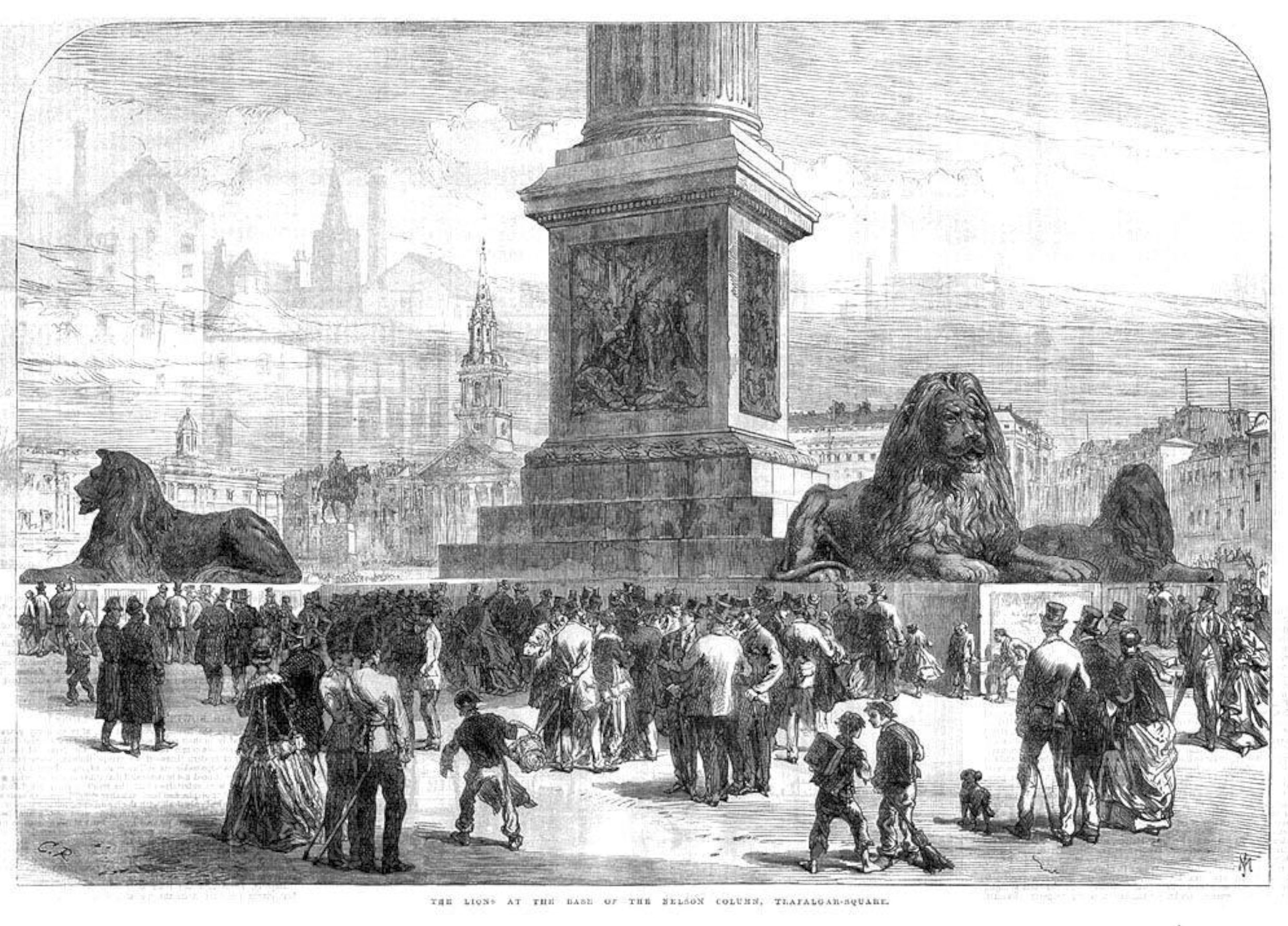
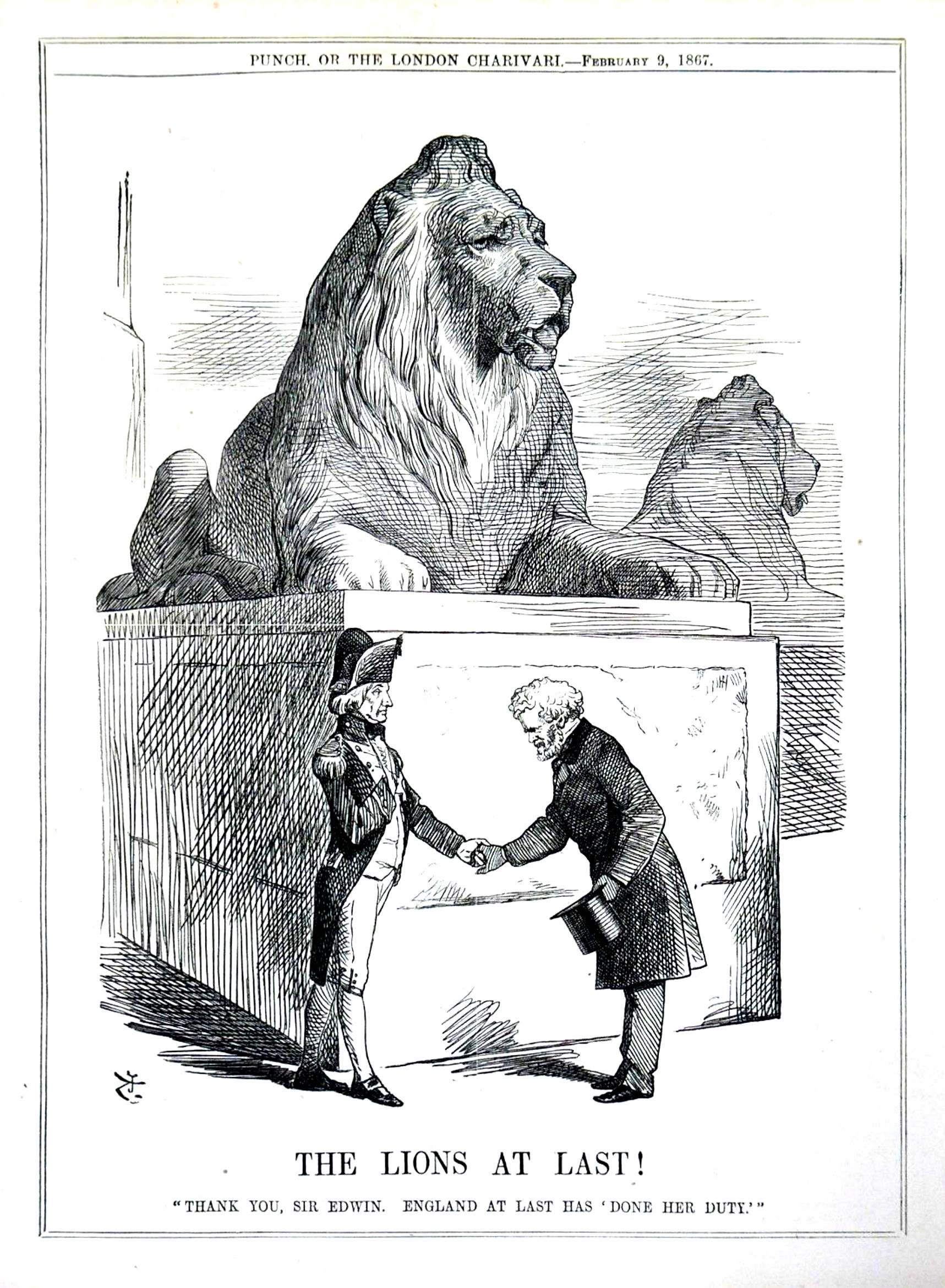
The Nelson’s Column itself was constructed in
1840-43, designed by William Railton, to commemorate Admiral Horatio Nelson,
1st Viscount Nelson, 1st Duke of Brontét, who died at the Battle of Trafalgar in 1805. The four lion
sculptures, designed by Sir Edwin Landseer in collaboration with Baron
Marochetti, were added in 1867.
In Tokyo, true-to-life lion statues are also found at Hyokeikan Building, Tokyo
National Museum, in Ueno Imperial Park, which was aimed at constructing a modern
art museum within the city of Tokyo and inaugurated for celebrating the wedding
of Emperor of Taisho (the then the crown Price) on the 10th May, 1900. At the
same time the museum was renamed as Tokyo Imperial
Museum,[7] and in 1952 as the present
name.
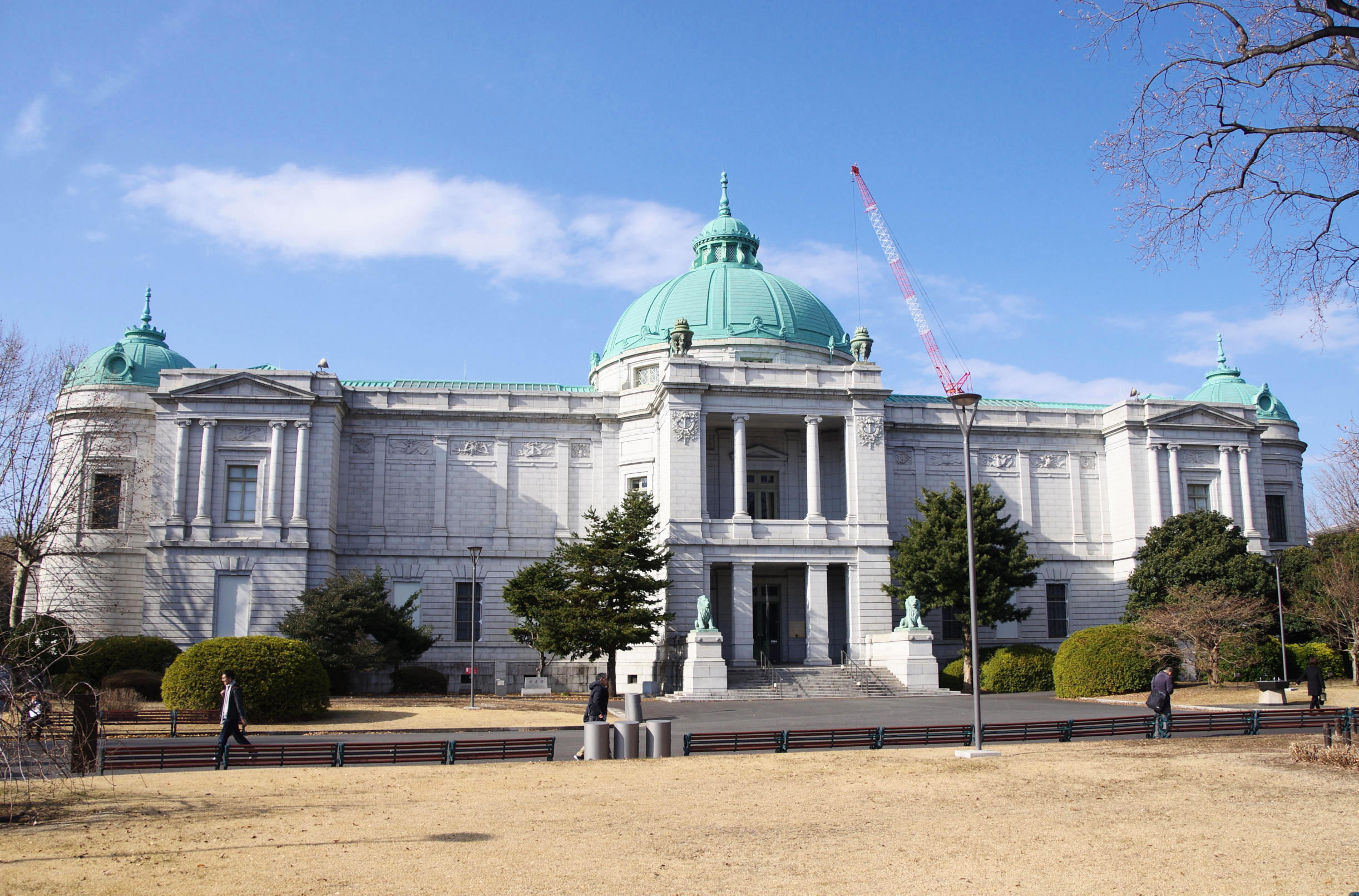

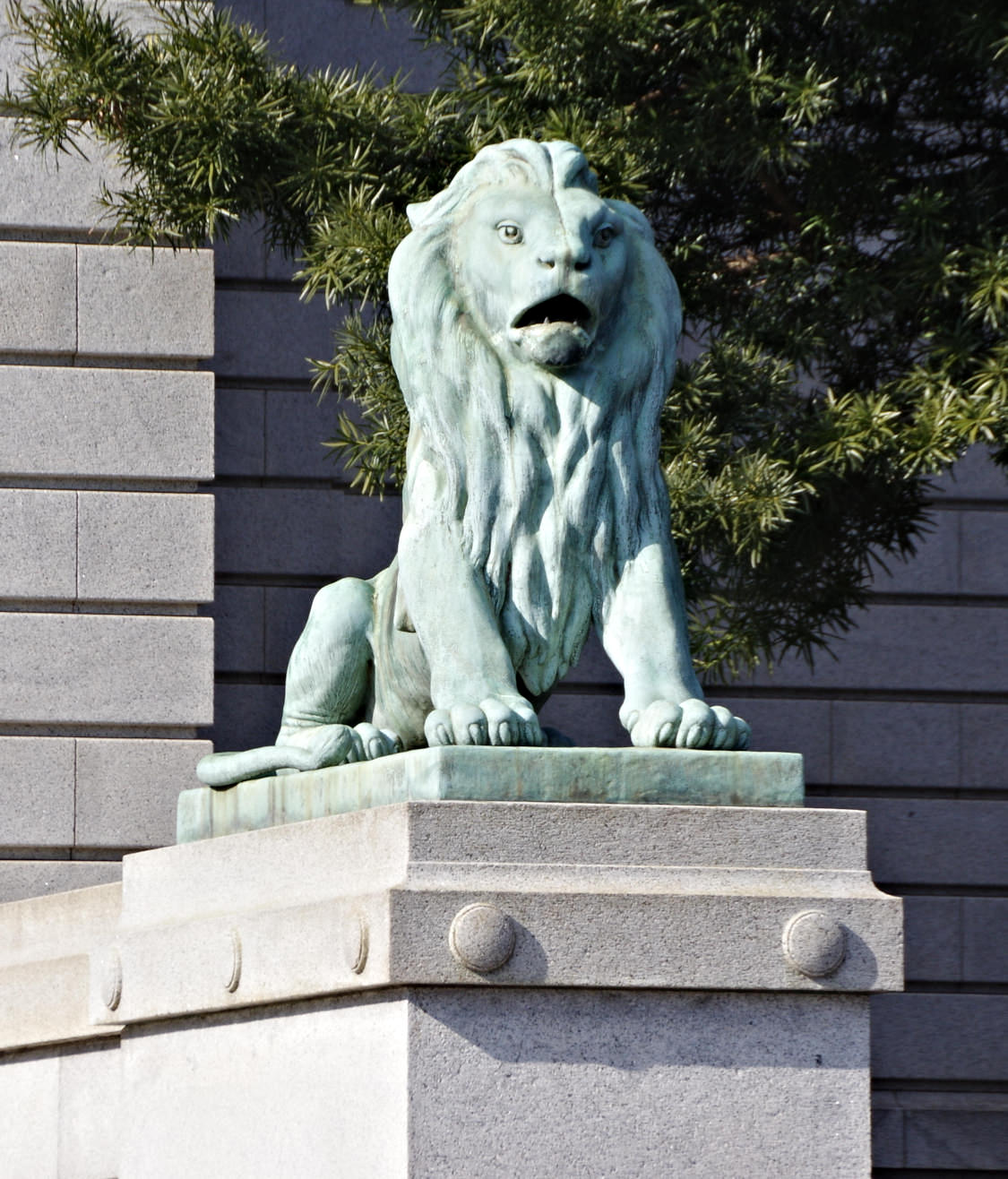
The idea to place lion statues as guardians of a museum would have been the
imitation of examples at the British Museum, the Louvre Museum, etc.
References
[1]
http://tsukijihongwanji.jp/
[2] An article in Yasukuni, Editorial office of
The 100 Year History of Yasukuni Shrine, 1 March 1984.
[3] The 100 Year History of Yasukuni Shrine:
Document Edition Vol. 2/3, 1983
[4]
Brochure of Mimeguri Shrine.
[5]
Homepage of
The MITSUI Public Relations Committee,
http://www.mitsuipr.com/special/spot/09/
[6] The Victorian Web,
http://www.victorianweb.org/...
[7]
https://www.tnm.jp/modules/r_free_page/index.php?id=151
---------------